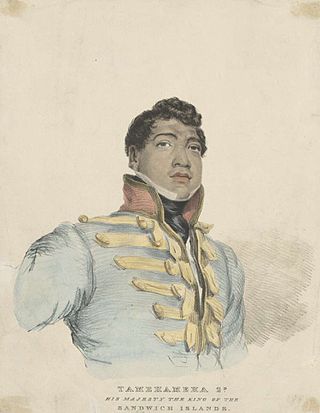
Kamehameha II was the second king of the Kingdom of Hawaii from 1819 to 1824. His birth name was Liholiho and full name was Kalaninui kua Liholiho i ke kapu ʻIolani. It was lengthened to Kalani Kaleiʻaimoku o Kaiwikapu o Laʻamea i Kauikawekiu Ahilapalapa Kealiʻi Kauinamoku o Kahekili Kalaninui i Mamao ʻIolani i Ka Liholiho when he took the throne.

Likelike was a princess of the Hawaiian Kingdom and member of the reigning House of Kalākaua. She was born in Honolulu, on the island of Oʻahu. Likelike's parents were Analea Keohokālole and Caesar Kapaʻakea, and the family were members of the aliʻi class of the Hawaiian nobility. Before the age of six, she was raised on the island of Hawaii for her health. Likelike later returned to Honolulu, where she was educated by Roman Catholic and Congregationalist teachers in the city's girls' schools.

Ruth Ke‘elikōlani, or sometimes written as Luka Ke‘elikōlani, also known as Ruth Ke‘elikōlani Keanolani Kanāhoahoa or Ruth Keanolani Kanāhoahoa Ke‘elikōlani, was a member of the House of Kamehameha who served as Governor of the Island of Hawaiʻi and for a period, was the largest and wealthiest landowner in the Hawaiian Islands. Keʻelikōlani's genealogy is controversial. Her mother's identity has never been in question but her grandfather Pauli Kaōleiokū's relationship to Kamehameha I is heavily disputed. While her father has been legally identified as early as 1864, disputes to that lineage continued as late as 1919. As one of the primary heirs to the Kamehameha family, Ruth became landholder of much of what would become the Bernice Pauahi Bishop Estate, funding the Kamehameha Schools.
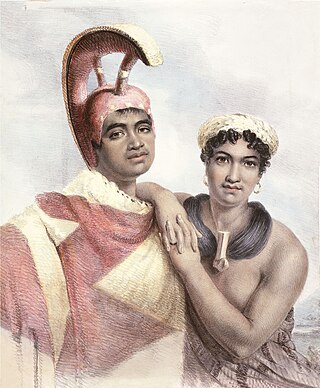
Kuini Liliha was a High Chiefess (aliʻi) and noblewoman who served the Kingdom of Hawaii as royal governor of Oʻahu island. She administered the island from 1829 to 1831 following the death of her husband Boki.

William Pitt Kalanimoku or Kalaimoku was a High Chief who functioned similarly to a prime minister of the Hawaiian Kingdom during the reigns of Kamehameha I, Kamehameha II and the beginning of the reign of Kamehameha III. He was called The Iron Cable of Hawaiʻi because of his abilities.

Boki was a High Chief in the ancient Hawaiian tradition and served the Kingdom of Hawaii as royal governor of the island of Oahu. Boki ran a mercantile and shipping business and encouraged the Hawaiians to gather sandalwood for trade.

Grace Kamaʻikuʻi Young Rooke was a Hawaiian high chiefess who was daughter of John Young, the chief military advisor during the formation of the Kingdom of Hawaii, and adoptive mother and aunt of a future queen consort.
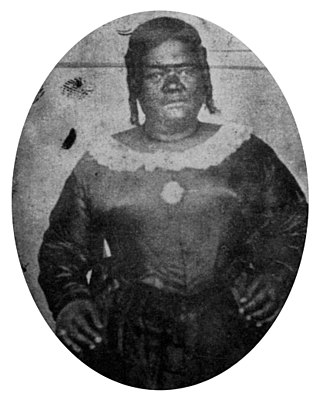
Keahikuni Kekauʻōnohi was a Hawaiian high chiefess who was a member of the House of Kamehameha. She was granddaughter to King Kamehameha I and one of the wives of Kamehameha II. Her Christian name is disputed; it is given as Mikahela in the 1848 Mahele Book and as Miriam in later sources.
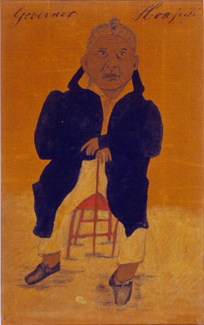
Ulumāheihei Hoapili was a member of the nobility during the formation of the Kingdom of Hawaii. He was a trusted military and political advisor to King Kamehameha I, known as "Kamehameha the Great". Although trusted with one of the last symbolic rites of the Hawaiian religion, he later became a supporter of Christian missionaries.

Kahakuhaʻakoi Wahinepio was a Hawaiian chiefess and member of the royal family during the Kingdom of Hawaiʻi. Wahinepio means captive women in Hawaiian. Sometimes she is called Wahineopiʻo, or an extra ʻokina is added, calling her Kahakuhaʻakoʻi. She was also called Kamoʻonohu. She was considered Kamehameha I's third favorite wife and served as female Governor of Maui, an act unheard of at the time in the western world, but common in Hawaiian history.

David Kamehameha (1828–1835) was a member of the royal family of the Kingdom of Hawaii.

Manono II was a Hawaiian chiefess and member of the royal family during the Kingdom of Hawaii. She along with her second husband Keaoua Kekuaokalani died fighting for the Hawaiian religion after Kamehameha II abolished the kapu system.

Julia Alapaʻi Kauwaʻa was a high chiefess of the Kingdom of Hawaii. Her name has been given as Julia Alapaʻi Kauwa and sometimes as Juliana instead.
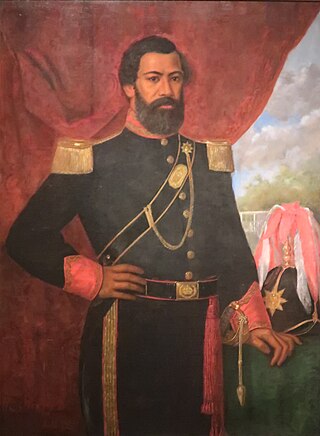
Levi Haʻalelea was a high chief and member of the Hawaiian nobility during the Hawaiian Kingdom. He initially served as a kahu and konohiki for High Chief Leleiohoku, one of the grandsons of Kamehameha I. He later became abHulumanu in the royal court of Kamehameha III and eventually served as Chamberlain for the court. He married Kekauʻōnohi, the granddaughter of Kamehameha I. These connections to the ruling dynasty gave him access to vast landholding during the land division of the Great Mahele in 1848. Active in politics, he was a member of the Privy Council of State and served in the House of Nobles. In later life, he helped the early Mormon missionaries to the islands by leasing them land and eventually converted to that faith.
Mele Kaʻauʻamokuokamānele or Kamānele was a high chiefess of the Kingdom of Hawaii and the betrothed bride of King Kamehameha III. Her early death prevented the marriage from occurring. Her Hawaiian name Kamānele means "the sedan chair".
Lanihau was a Hawaiian high chiefess of the Hawaiian Kingdom. She served as the Keeper of the Royal Mausoleum of Mauna ʻAla from 1885 to 1886 and was the last Governess of the islands of Kauai and Niihau from 1886 to 1888. During her tenure, she was given the honorific Her Excellency, the Governess of Kauai.
ʻAkahi was a high chiefess and female landholder of the Kingdom of Hawaii. Also known as "Akahi-a-Kaleiwohi", she was named after her great-grandmother Akahi-a-Kuleana. ʻAkahi was also the name of Akahi-a-Kuleana, the mother of 15th-century Hawaiian king ʻUmi-a-Līloa. A relation of the ruling House of Kamehameha, ʻAkahi was married to Kahekili Keʻeaumoku II and Kalanimoku, two prominent Hawaiian high chiefs and politicians during the early 19th century. She lived most of her life on the island of Hawaii where she was allocated vast landholdings after the Great Mahele of 1848. After her death in 1877, these lands were inherited by her relative Bernice Pauahi Bishop and upon the latter's death became part of the Bernice Pauahi Bishop Estate, which now funds the Kamehameha Schools.

George Charles Beckley was an English captain, trader, and military adviser. He was one of the earliest foreigners to have a major impact in the Kingdom of Hawaii, where he eventually became a noble, and was one of the disputed creators of the Flag of Hawaii.
Hewahewa was a Hawaiian religious leader who served as kahuna nui of King Kamehameha I and his successor Kamehameha II. Hewahewa was a powerful figure in the royal court of Hawai’i and played a major role in the abolition of the kapu system, the decline of the native religion of Hawai’i, and the introduction of Christianity to the Hawaiian Kingdom.
Haʻaheo Kaniu or Kaniuʻopiohaʻaheo was a high chiefess (aliʻi) and member of the royal family of the Hawaiian Kingdom. She was also known as Lydia Haʻaheo Kaniu.















